6 Best Bicep Width Exercises (with Pictures!)
With how vital the biceps brachii are in terms of having aesthetically appealing arms, it should be no surprise that exercisers of all types are seeking a way to improve the width of this two-headed muscle group.
Fortunately for many, it is rather easy to stimulate hypertrophy in the long (outer) head of the biceps, as well as other nearby muscle groups - thereby improving the actual width of the entire upper arm itself.
As a general rule, if an exercise targets the brachialis muscle, it will likely also target the outer head of the biceps as well, meaning that all exercises of this nature are effective at building biceps width and fullness.
Movements like the hammer curl, reverse curl or neutral-grip pull-up all fall under this category.
Anatomy of the Biceps Brachii
As the name implies, the biceps brachii is a two-headed muscle group that attaches to the radius and runs along the anterior and lateral side of the humerus.
They are part of a number of muscles that contribute to elbow flexion, and are considered quite vital in nearly any movement involving the arms.
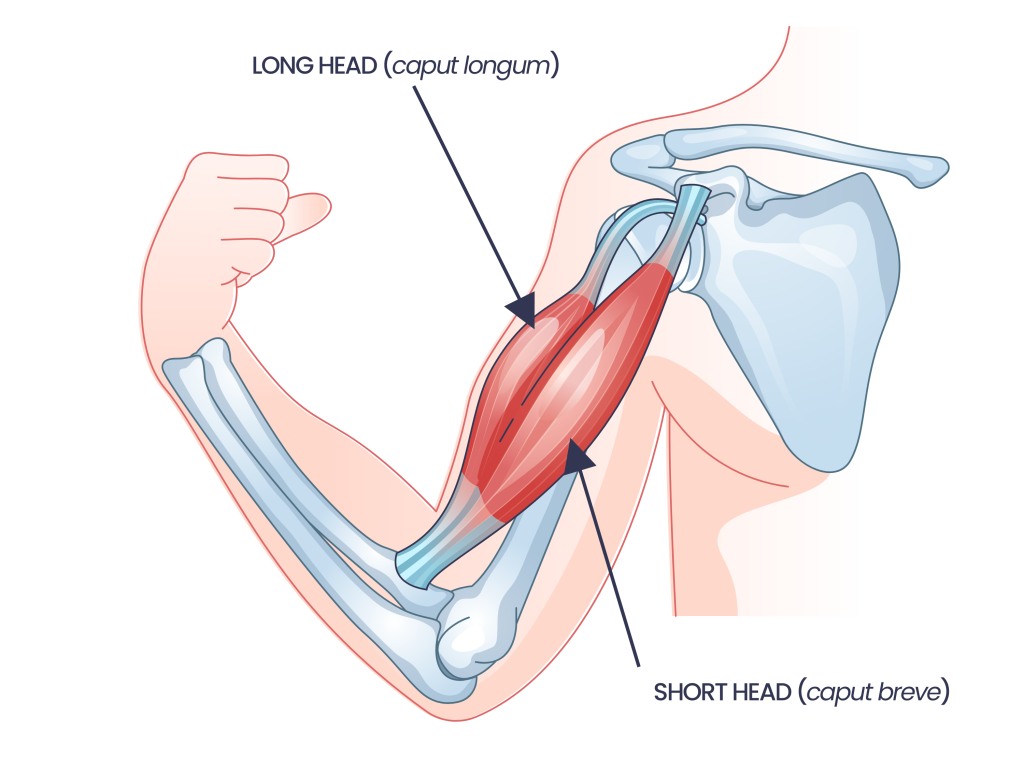
The two heads of the biceps are not equal in size, as the lateral, “outer” or “long” head is considerably more visible when viewed from a lateral or front-facing perspective, hence the fact that improving biceps width will primarily target this portion of the muscle group.

Because the biceps’ main function is to perform elbow flexion (pictured above), the primary way of developing the long head of the biceps will involve actions like curling or pulling against external resistance, such as would be the case in bicep curls, rows or pull-ups.
Nearby Muscle Groups that Contribute to Upper Arm Width
Though the long head of the biceps contributes greatly to the appearance of width in the upper arms, other nearby muscles (just one, in actuality) can also help achieve a more three-dimensional look to the arms.
The muscle of the brachialis, in particular, lies to the side of the long head and is partially located beneath the biceps brachii, meaning that inducing muscular hypertrophy of the brachialis will push the biceps outwards, creating a wider appearance.
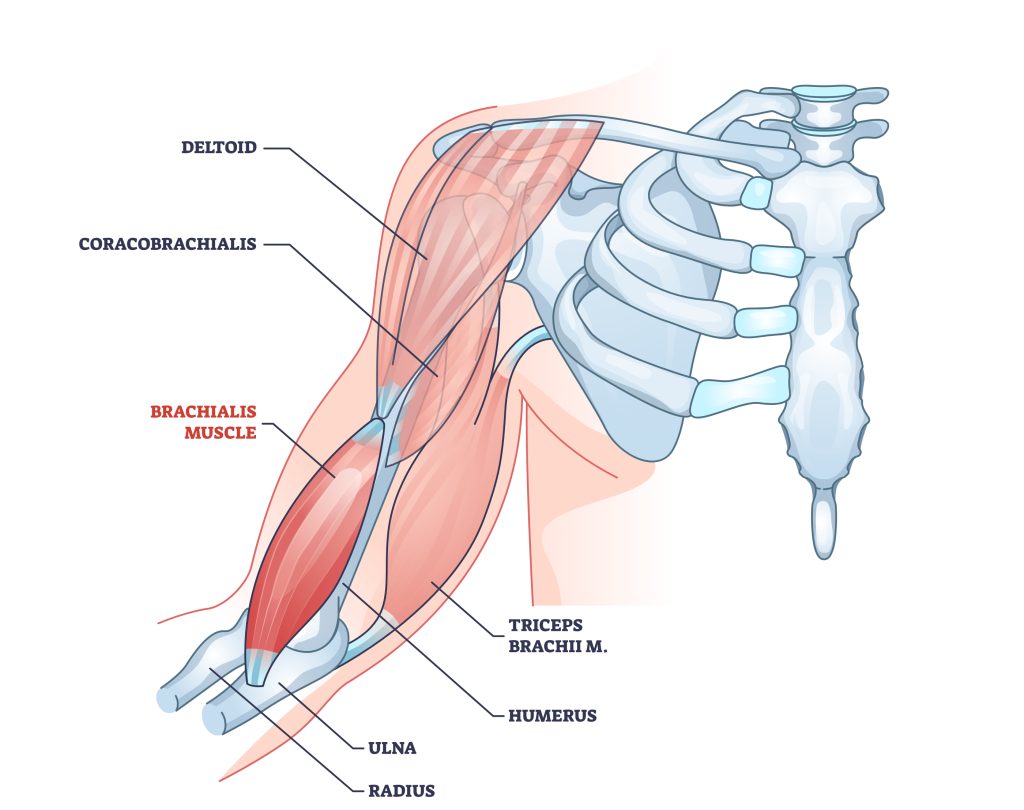
For the most complete results, lifters will also wish to target the brachioradialis muscle that runs alongside the upper forearm, as well as the long head of the triceps brachii. This will create the appearance of wider biceps from the front.
What Makes the Biceps Wider?
Making the biceps wider is quite simple in theory; inducing muscular hypertrophy of the biceps and brachialis muscles.
However, this can be influenced by a number of factors like genetics, exercise selection and recovery methods, meaning that solely inducing hypertrophy alone is insufficient.
For maximizing the width of their biceps and the upper arm, the lifter will need to have the correct diet, sufficient recovery time and select the correct exercises in their workout program.
Read onwards for the most effective exercises used to build wider biceps.
1. Hammer Curls
The quintessential biceps width exercise, hammer curls are a single-joint compound exercise mechanically similar to the biceps curl, only with the hands set in a neutral grip, rather than a supinated one.
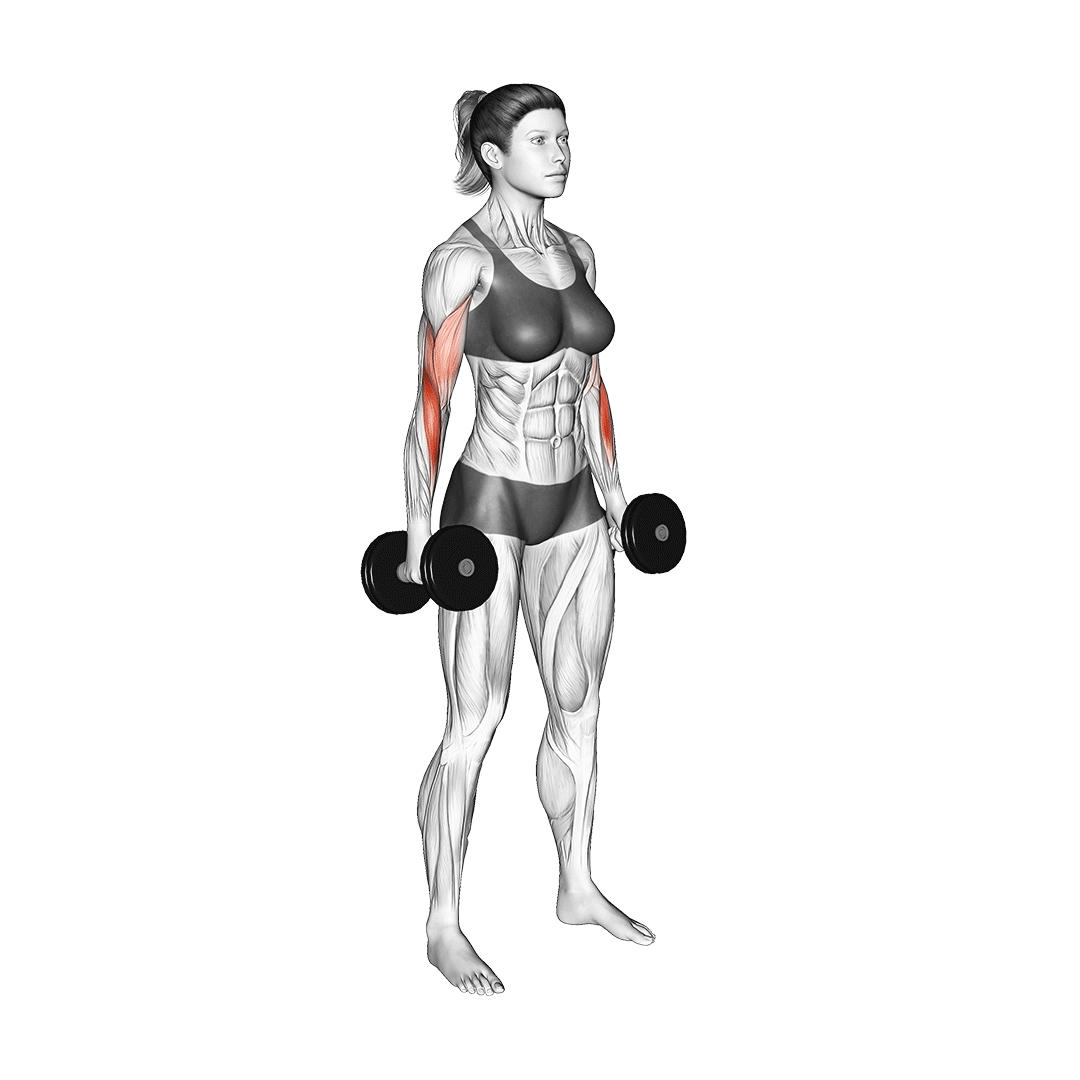
This seemingly small change in grip form alters the muscular recruitment of the exercise, shifting some of the resistance to the brachialis and brachioradialis, rather than solely isolating the biceps alone.
Equipment Needed to Hammer Curl
Hammer curls are traditionally performed with a pair of dumbbells, but may also be done with a parallel barbell or even a resistance machine.
Muscles Worked by Hammer Curls
Hammer curls will target the biceps brachii - particularly the long head - as well as the brachialis and brachioradialis muscles.
How-to Hammer Curl
To perform a hammer curl, the lifter will stand upright with the weights held at pelvis-height, hands in a neutral grip.
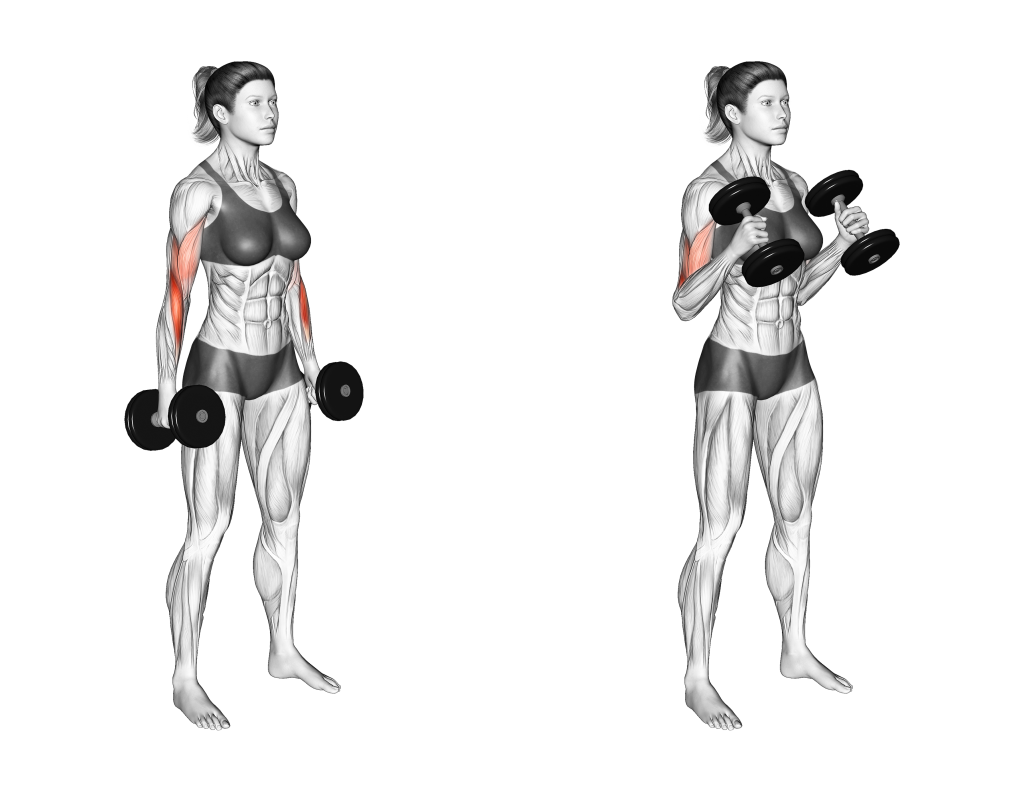
Keeping the upper arms and elbows as stationary as possible, the lifter will then draw the weights upwards until they have reached shoulder-level elevation.
Squeezing the biceps in this position, they will then slowly reverse the motion, thereby completing the repetition.
2. Reverse Curls
Reverse curls are simply a conventional bicep curl performed with a pronated grip, rather than a supinated one.
Changing the position of the hands in such a way will directly alter what muscles are trained by the exercise, instead shifting it to parts of the forearms and upper arm, rather than targeting the biceps alone.
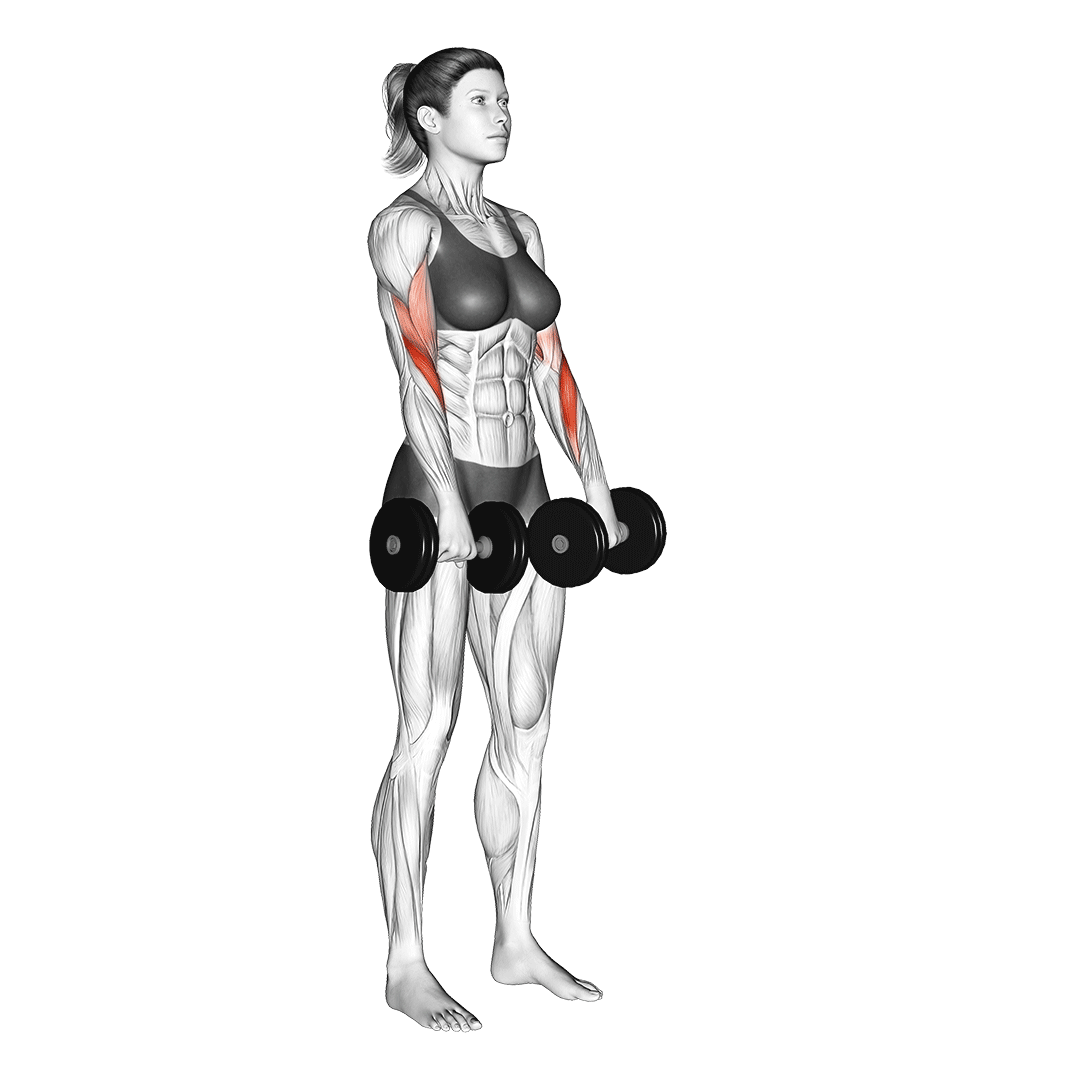
As such, it is safe to say that the reverse curl is a compound exercise involving only a single moving joint, and is arguably one of the more effective low-impact movements for building bicep width and forearm strength.
Equipment Needed to Reverse Curl
Reverse curls may be performed with any sort of equipment that a traditional bicep curl uses, such as dumbbells, straight barbells or EZ-barbells.
Muscles Worked by Reverse Curls
Reverse curls will train the muscles of the forearms (especially the brachioradialis), the biceps and the brachialis muscles - all of which contribute greatly to arm width and strength.
How-to Reverse Curl
To perform reverse curls, the lifter will grip the weights in an overhand position at their hips, setting their elbows closely to their sides.

Bending at the elbows, they will draw the weight upwards, ensuring that the wrists remain neutral in curvature.
Once the weights have reached approximately shoulder-elevation, they will squeeze the forearms for a moment before reversing the motion, thereby completing the exercise.
3. Cross Body Curls
Cross body curls are a variation on the standard bicep curl with a slightly wider range of motion and greater focus on the long head of the biceps, thereby better contributing to bicep width.
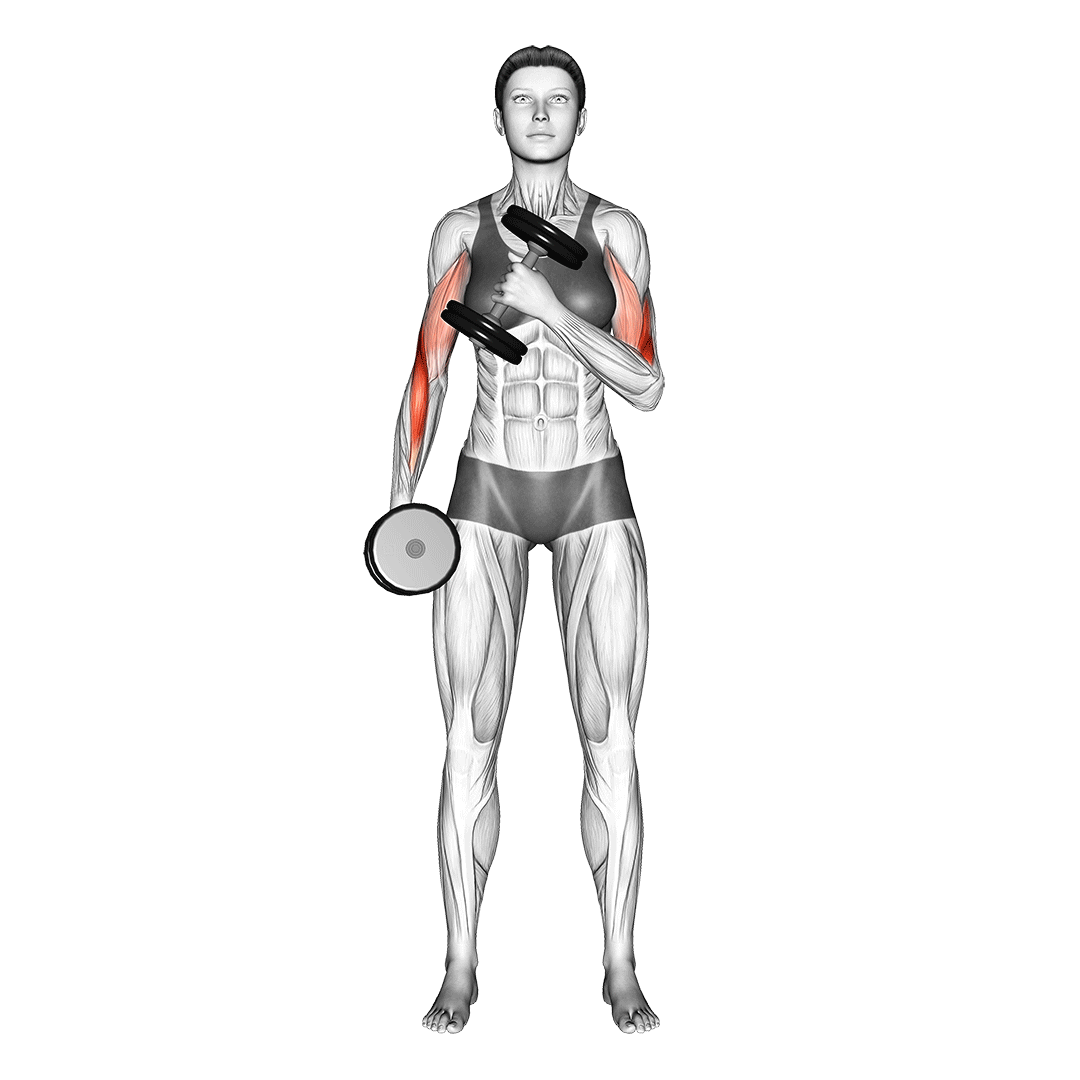
Just like regular bicep curls, cross body curls are a single joint isolation exercise primarily involving recruitment of the biceps alone.
Equipment Needed to Cross Body Curl
Cross body curls will require a single dumbbell of moderate weight, though they are also possible with resistance bands or resistance machines.
Muscles Worked by Cross Body Curls
Cross body curls are an isolation exercise and solely target the biceps brachii, with a particular focus on the outer or “long” head.
How-to Cross Body Curl
To perform a repetition of the cross body curl, the lifter will stand upright with a dumbbell gripped in one hand.

Ensuring that the upper arm remains as stationary as possible, they will bend at the elbow and draw the dumbbell diagonally upwards, crossing their torso and stopping once the dumbbell is at approximately shoulder elevation.
Holding this position for a moment, they will then reverse the motion, returning the dumbbell to hip-height and thereby having completed the repetition - at least, on one side of the body.
4. Neutral Grip Pull-Ups
Though the usual idea of a biceps exercise is a low-weight curl variation, neutral grip pull-ups are actually excellent for building the width and capabilities of the upper arm as a whole.
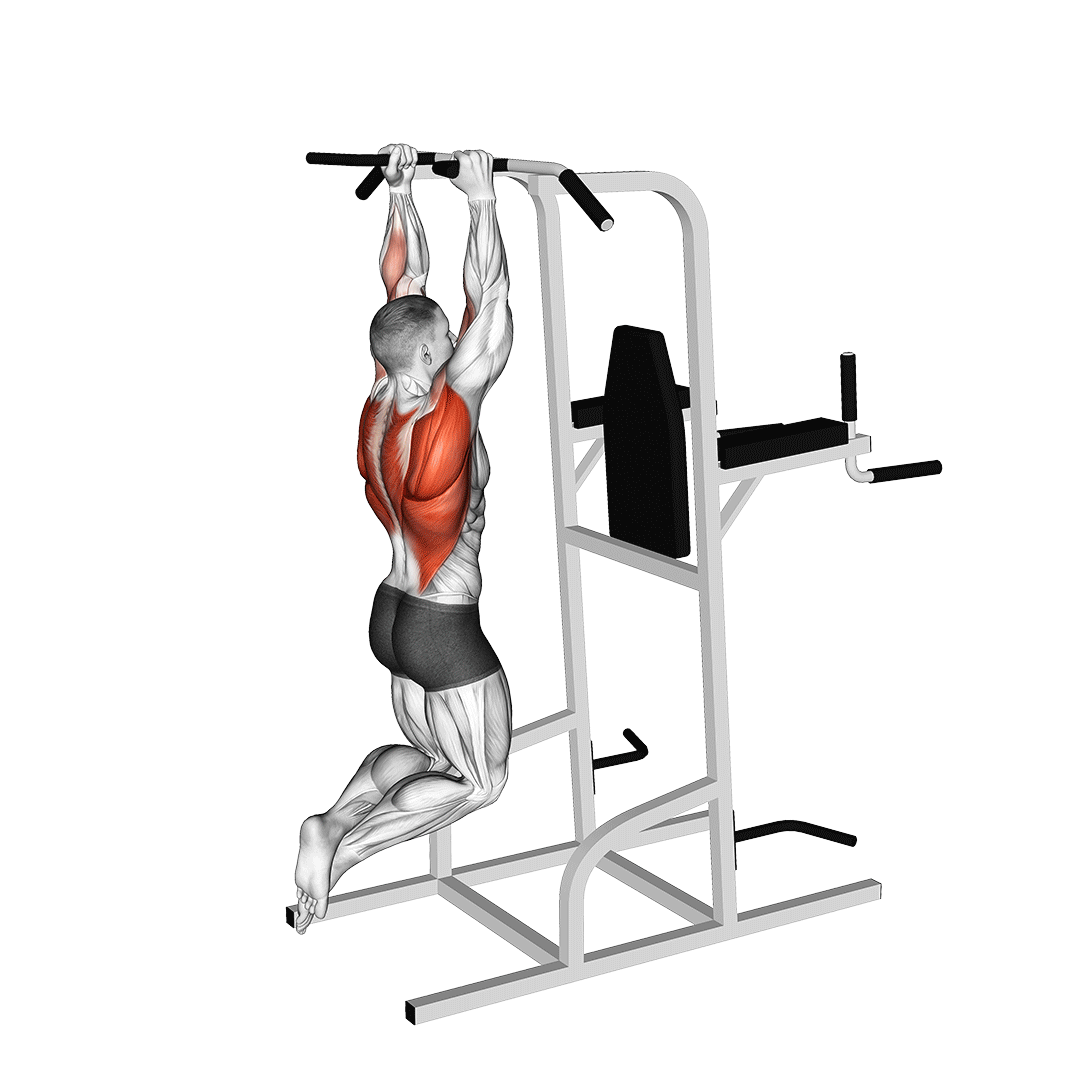
While the conventional pull-up will feature a pronated grip that relies more on the inner head of the biceps, switching to a neutral grip allows the brachialis and brachioradialis to be targeted alongside the outer head of the biceps - greatly contributing to the width of the biceps, as well as its actual stability and strength.
Like other pull-up variations, the neutral grip pull-up is an intense multi-joint compound exercise that is usually performed with the lifter’s own body weight alone, though more advanced lifters may add further weight through a dip belt.
Equipment Needed to Neutral Grip Pull-up
Pull-ups require only an overhead bar from which to suspend oneself, though additional equipment like an assisted pull-up machine or dip belt and plates may be of use for progressive overload.
Muscles Worked by Neutral Grip Pull-ups
Pull-ups will train the muscles of the latissimus dorsi, deltoids, trapezius, rhomboids, biceps brachii, brachioradialis, core, and brachialis - all to a highly effective level.
How-to Neutral Grip Pull-up
To perform a neutral grip pull-up, the lifter will suspend themselves from an overhead parallel bar, contracting their core muscles so as to avoid swinging of the lower body.
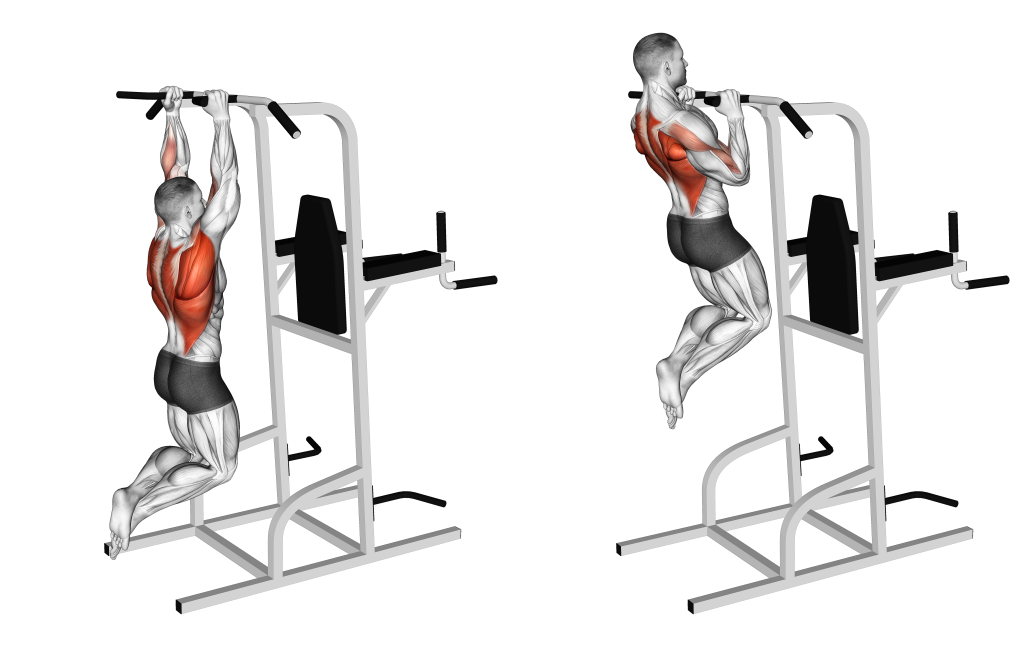
Flexing the lats and biceps, they will then bend at the elbows and draw their chest upwards, stopping once their head has cleared the bars.
Once the apex of the repetition has been reached, the lifter will then slowly return to the dead hang position, thereby completing the exercise.
5. Modified Barbell Curls
The conventional barbell bicep curl is an all-around solid bicep builder, but modifying the grip width can allow lifters to better target the outer head of their biceps - thereby allowing for more focus to be placed on building the actual width of the movement.
This exercise is also known as a wide-grip barbell curl.
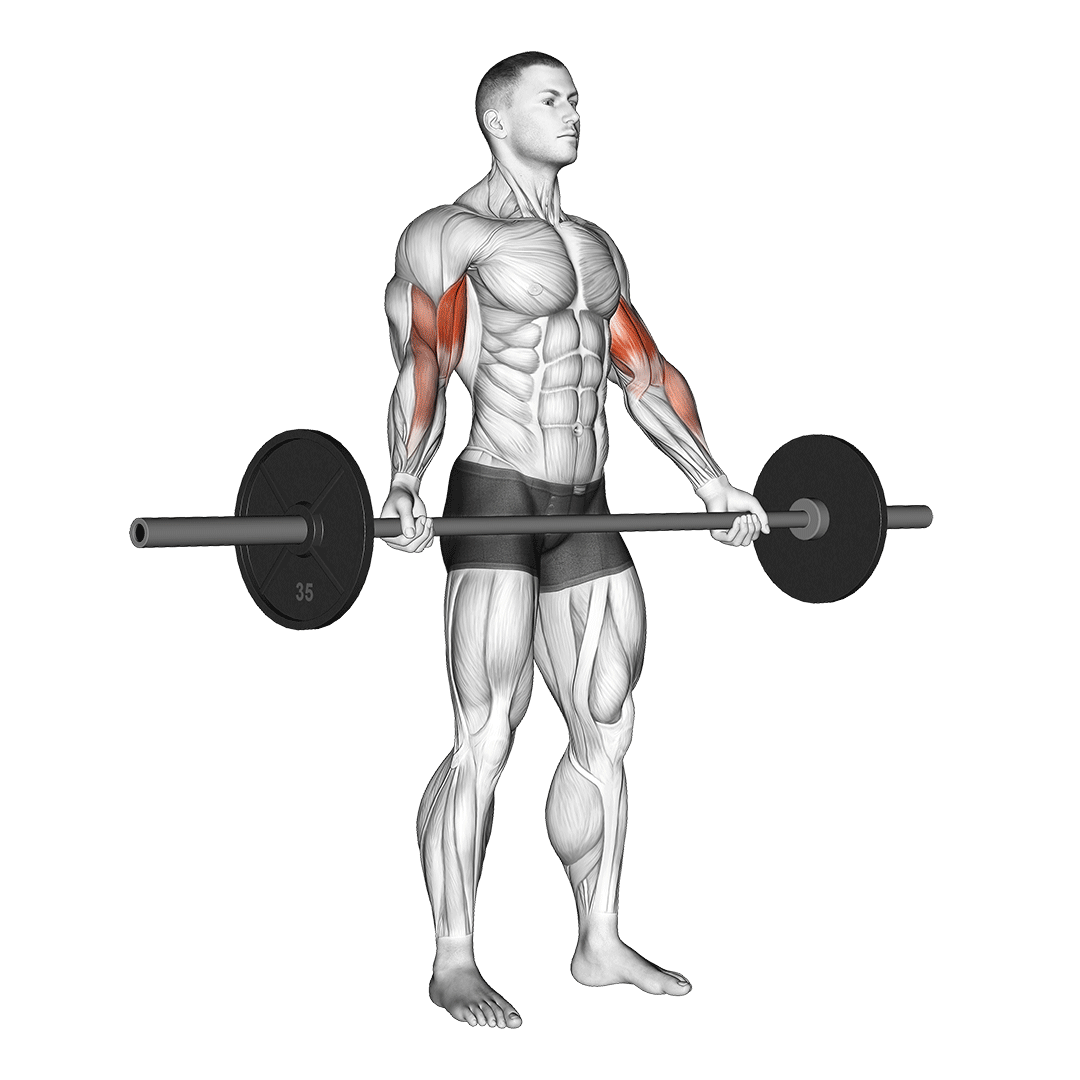
Like other conventional curl exercises, the wide-grip barbell curl is an isolation exercise that makes use of a single joint, and is otherwise performed solely for the purposes of training the biceps brachii.
Equipment Needed for Modified Barbell Curls
Wide-grip barbell curls will require a barbell and set of weight plates.
Muscles Worked by Modified Barbell Curls
As an isolation exercise, wide-grip barbell curls will solely train the biceps brachii.
How-to Modified Barbell Curls
To perform a wide-grip barbell curl, the lifter will stand upright with a barbell held in both hands, palms facing upwards. The hands should be set somewhat wider than shoulder-width apart so as to better target the outer head of the biceps.
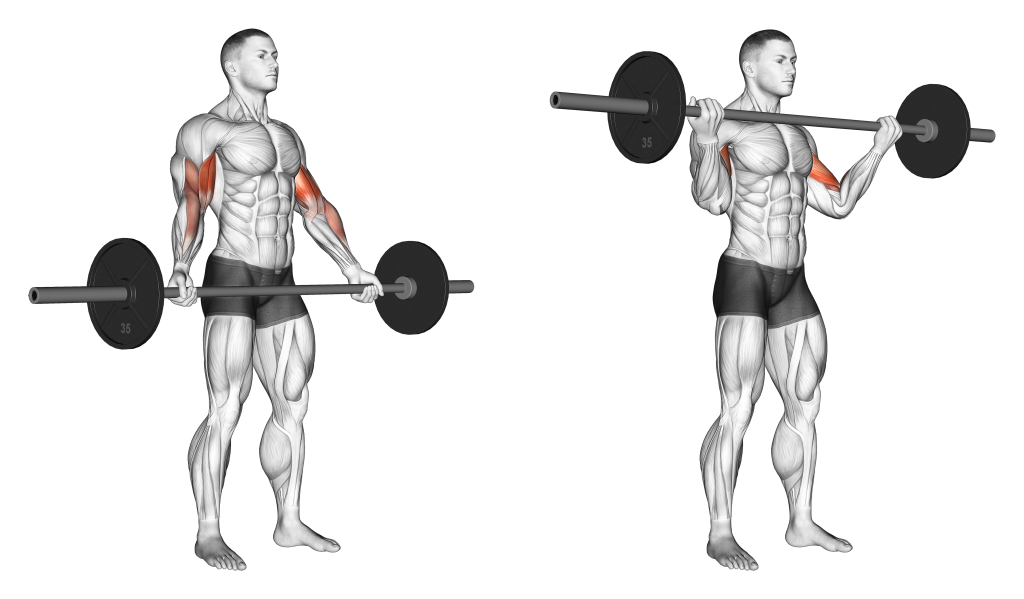
Ensuring that the upper arm and elbows move as little as possible, they will then bend the arms and draw the barbell upwards, stopping once it has reached approximately shoulder height.
Squeezing the biceps for a moment, they will then complete the repetition by slowly lowering the barbell until the arms have returned to a state of full extension.
6. Dumbbell Incline Curls
Dumbbell incline curls are simply conventional dumbbell bicep curls with the torso set at an inclined angle so as to better emphasize the long head of the biceps brachii.
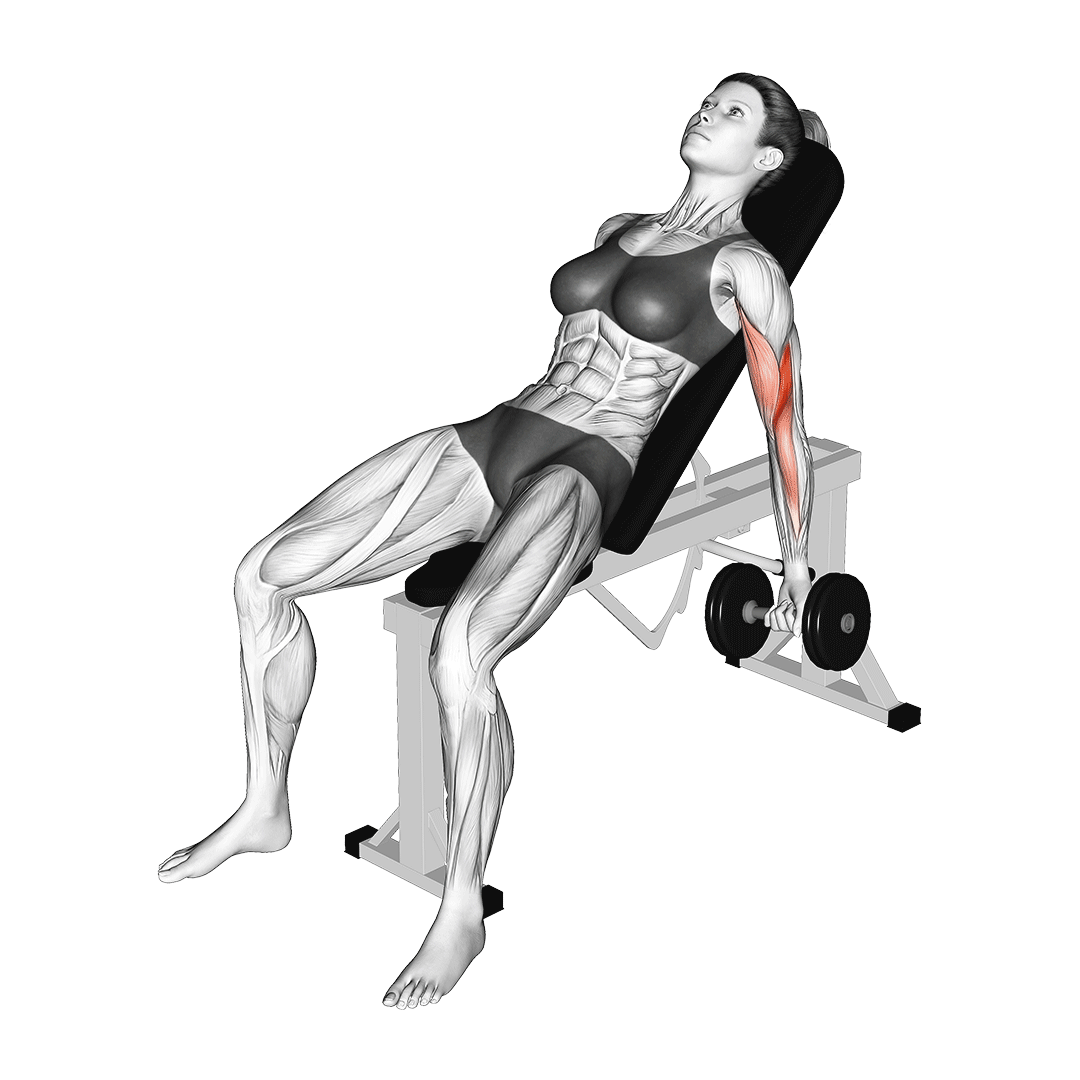
In turn, with sufficient hypertrophy of this section of the biceps, the upper arm will appear wider - especially when combined with exercises that also target the brachialis muscle.
This is made further effective by the longer range of motion of the dumbbell incline curl, allowing for greater hypertrophy and a longer time under tension to occur.
Like other conventional dumbbell curl variations, the dumbbell incline curl is a single-joint isolation exercise of moderate intensity.
Equipment Needed for Dumbbell Incline Curls
The dumbbell incline curl will require one or a pair of dumbbells, as well as an adjustable incline bench.
Muscles Worked by Dumbbell Incline Curls
Dumbbell incline curls solely work the biceps brachii, with a particular focus on the outer or long head of the muscle.
How-to Dumbbell Incline Curl
To perform a repetition of the dumbbell incline curl, the lifter will adjust a bench so that it will place their torso at an approximate 45-55 degree angle when laid upon.

Gripping the dumbbells in their hands, the lifter will rest their torso on the bench and “glue” the upper arm to the sides of the body, ensuring that they do not move as the exercise is performed.
Beginning with the arms fully extended, the lifter will contract their biceps and pull the weights upwards, stopping once it has cleared the chest and is approximately at shoulder-elevation.
From this position, they will then slowly lower the dumbbells back to their original point with the arms fully extended, thereby completing the repetition.
Frequently Asked Questions (FAQ)
Which Bicep Muscle Gives Width?
The biceps are in fact a single muscle group, and as such training the biceps directly is the only way to make them appear wider.
However, if speaking of upper arm width, it is both the outer head of the biceps brachii and the neighboring brachialis muscles that should be trained so as to create the appearance of a wider and fuller upper arm, especially from the front and lateral view.
Why Are My Biceps Not Wide?
Bicep width largely comes down to the target of your training, though genetics do indeed play some role in the appearance of the upper arm.
For the most part, you may improve the width and appearance of your biceps by performing direct biceps isolation exercises, like the incline dumbbell curl or EZ-bar curl - as well as training other nearby muscle groups, like the brachialis and triceps brachii.
How Can I Increase my Biceps Width at Home?
Unfortunately, unless you have access to a dumbbell or barbell, it is hard to directly train the biceps at home. The only two choices available are the chin-up and inverse row, both of which are compound exercises that may be difficult to perform for newer exercisers.
If building bicep mass at home is the goal, then it may be prudent to look into purchasing an adjustable pair of dumbbells, so dumbbell curls or hammer curls may be performed.
Final Thoughts
Remember that building muscle mass isn’t all about being in the gym. It is important to ensure that you are following a proper diet and allot sufficient time with which your body can recover, otherwise no growth will occur.
And as always, remember to practice proper form and to ensure that your programming is sound.
References
1. Charlotte S., Anneliese F., Disselhorst-klug C. The role of biceps brachii and brachioradialis for the control of elbow flexion and extension movements. Journal of Electromyography and Kinesiology. 2016;28:67–75. doi: 10.1016/j.jelekin.2016.03.004.
2. Barakat, Christopher, Renato Barroso, Michael Alvarez, Jacob Rauch, Nicholas Miller, Anton Bou-Sliman, and Eduardo O. De Souza. 2019. "The Effects of Varying Glenohumeral Joint Angle on Acute Volume Load, Muscle Activation, Swelling, and Echo-Intensity on the Biceps Brachii in Resistance-Trained Individuals" Sports 7, no. 9: 204. https://doi.org/10.3390/sports7090204
